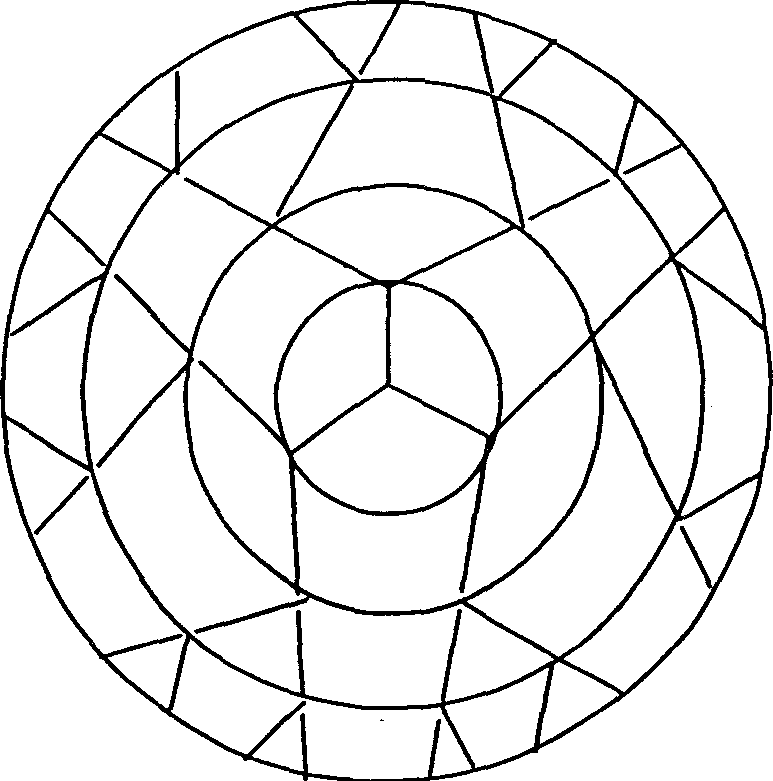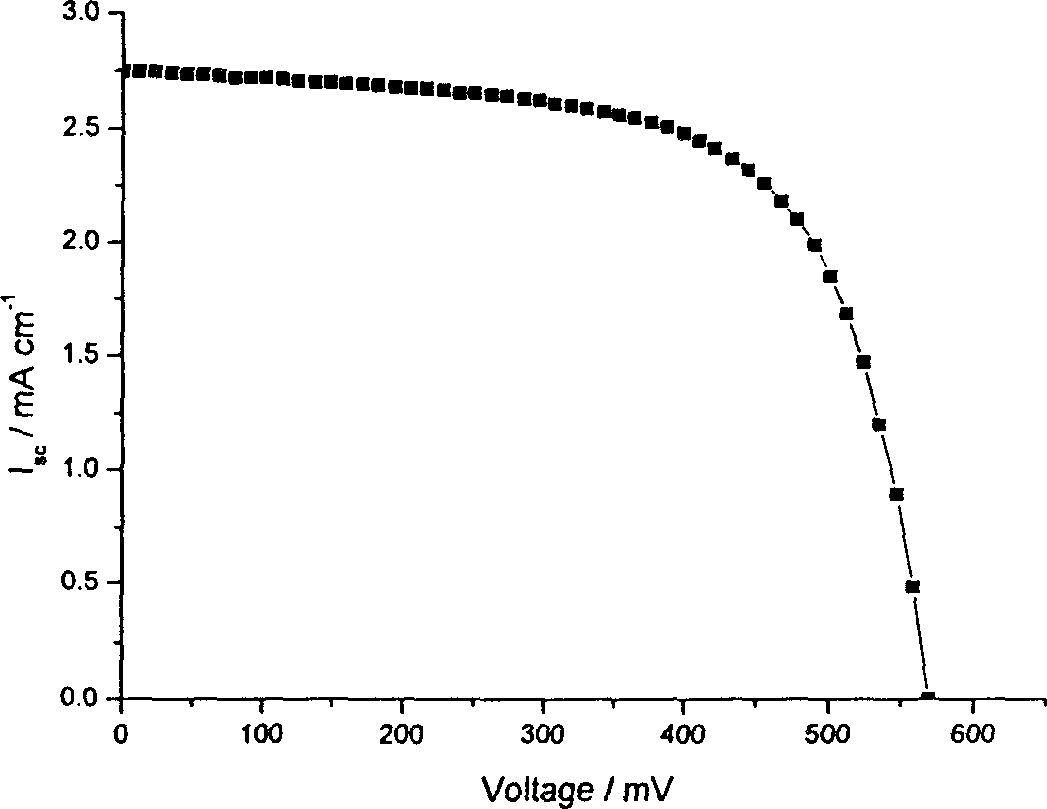Dye sensitization nanocrystalline solar battery based on dendroid compounds and its preparing method
A technology of solar cells and dye sensitization, which is applied in the field of dye-sensitized nanocrystalline solar cells and its preparation, can solve problems such as unsatisfactory effects and decreased ion conductivity of all-solid electrolytes, so as to prolong the service life and avoid leakage and volatilization , Improve the effect of conversion efficiency
- Summary
- Abstract
- Description
- Claims
- Application Information
AI Technical Summary
Problems solved by technology
Method used
Image
Examples
Embodiment 1
[0031] Embodiment 1: A titanium dioxide nanocrystalline film electrode is placed in 5 * 10 -4 mol / L N3 dye in ethanol solution for 24 hours to sensitize. Add dropwise 0.1 ml containing 0.05 mol / L I 2 , 0.5 mol / L 4-tert-butylpyridine, 0.5 mol / L LiI, 1-methyl-3-propyl-imidazolium iodonium salt solid electrolyte of 10% first-generation polypropyleneimine dendrimers, and then a piece of Platinum-coated ITO glass is placed on a dye-sensitized nano-TiO2 crystal film and clamped for measurement. at 100mW / cm 2 Under white light irradiation, the open circuit photovoltage of the electrode is 569mV, and the short circuit photocurrent is 2.8mA / cm 2 , fill factor 0.64, energy conversion efficiency 1.0%.
Embodiment 2
[0032] Embodiment 2: A titanium dioxide nanocrystalline film electrode is placed in 5 * 10 -4 mol / L N3 dye in ethanol solution for 24 hours to sensitize. Add dropwise 0.1 ml containing 0.5 mol / l I 2 , 0.5 mole / liter 4-tert-butylpyridine, 0.05 mole / liter LiI, 1-methyl-3-propyl-imidazole iodide solid electrolyte of 3% second-generation polypropylene imine type dendrimers, and then A piece of platinum-coated ITO glass is placed on a dye-sensitized nano-TiO2 crystal film, encapsulated with a heat-sealing adhesive, and then measured. at 100mW / cm 2 Under white light irradiation, the open circuit photovoltage of the electrode is 589mV, and the short circuit photocurrent is 4.6mA / cm 2 , fill factor 0.51, energy conversion efficiency 1.8%.
Embodiment 3
[0033] Embodiment 3: A titanium dioxide nanocrystalline film electrode is placed in 5 * 10 -4mol / L N3 dye in ethanol solution for 24 hours to sensitize. Add dropwise 0.1 ml containing 0.1 mol / l I 2 , 1.0 mol / L 4-tert-butylpyridine, 0.2 mol / L LiI, 1-methyl-3-propyl-imidazolium iodonium salt solid electrolyte of 1% three-generation polypropylene imine dendrimers, and then a piece of Platinum-coated ITO glass is placed on a dye-sensitized nano-TiO2 crystal film, encapsulated with heat-sealing glue, and then measured. at 100mW / cm 2 Under white light irradiation, the open circuit photovoltage of the electrode is 468mV, and the short circuit photocurrent is 3.0mA / cm 2 , fill factor 0.42, energy conversion efficiency 0.59%.
PUM
| Property | Measurement | Unit |
|---|---|---|
| particle size | aaaaa | aaaaa |
| energy conversion efficiency | aaaaa | aaaaa |
| energy conversion efficiency | aaaaa | aaaaa |
Abstract
Description
Claims
Application Information
 Login to View More
Login to View More - R&D
- Intellectual Property
- Life Sciences
- Materials
- Tech Scout
- Unparalleled Data Quality
- Higher Quality Content
- 60% Fewer Hallucinations
Browse by: Latest US Patents, China's latest patents, Technical Efficacy Thesaurus, Application Domain, Technology Topic, Popular Technical Reports.
© 2025 PatSnap. All rights reserved.Legal|Privacy policy|Modern Slavery Act Transparency Statement|Sitemap|About US| Contact US: help@patsnap.com



